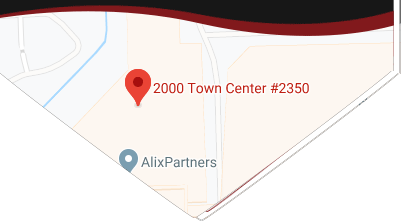So, what’s involved with starting divorce? Your first step is that you want to be prepared. You want to prepare for what you’re doing here, you want to have some sense of your goals and you don’t want to be making rash decisions. Get a sense of what you think this should look like, what your objectives are, what your goals are, what you want to see happen. Divorce means you’re going to go your separate ways, so you’re going to want to have given that some thought. If you have children, you want to have some idea of what kind of custody and parenting time arrangement you want.
Your second step is to get some preliminary advice. It’s good to talk to an attorney early on, if you’re not up for that at that point or you don’t want to hit that stage yet, do some research, read some things on the internet, that’s a good start. You want to get advice to prepare. You will then get to the point where you are ready to file for divorce. That process involves drafting a divorce complaint, where you write up a document, there’s not really a “form.” There are forms, but they are not great. Ideally you draft your own complaint, or have an attorney do so. And when filing a lawsuit, there’s going to be a summons and either you prepare that document, or the county does, depending on what county you’re in. If there are children, there’s other forms that are filed, like a verified statement for example. There are other forms depending on the county you are in.
There are advantages to filing first because, among other reasons, you can get court orders, ex-parte orders (“ex-parte”is latin for “without a hearing”), for custody and parenting time, child support, whatever else you might want. You will then file your divorce case in the circuit court, not the local district court. So when you file for divorce, everyone who lives in your county files a divorce in the same building, the circuit court. In some counties you file it online, but either way, you pay a filing fee of $175 if there are no minor children, or $255 if there are minor children. If you file in person, you get the documents stamped and filed, the court assigns a case number, they randomly assign it to a judge, and then you’re up and running! Now you have a divorce case filed. If it’s online you need to wait to get a response and then go forward from there.
Once you’ve got everything filed and your paperwork is done, your next step is to get your wife served with papers. You have 90 days to get her served according to the court rules. You don’t have to do it right away, the timing of that of course is up to you, and by having her served, what we’re talking about is what’s called “service of process.” Your wife is required to be given notice of your divorce case to go forward with the divorce process. There are different methods of having someone served with papers, all of which are valid. You could have someone hand it to her, and then they can sign the back of the summons, which is called the “return of service.” So the person who served your wife with papers will sign the document that says that they verify that they’ve served her on whatever day and time. Typically a summons is a two-sided document or two-page document. Anyone over eighteen years of age is qualified to serve your wife with court papers. The only adult who cannot do it is you, because you’re a party to the lawsuit. Another option is to have your wife sign an acknowledgement of service. There are other methods for service as well, but these are your best choices.
Once you’ve got your wife served with papers, then there’s a waiting period, and your wife then has 21-28 days (depending on how she was served) to file an answer. So she is then on a deadline and must file an answer, or a response to the complaint. This Answer is then filed with the court, and a copy must be sent to you or your attorney.
Once all that’s been done, you and your wife are required to fill out a verified financial information form. You must complete this state mandated form and sign it under oath. This is a written financial disclosure of your assets and liabilities. The form contains details about what it is you own; house, bank accounts, savings, retirement, debts, mortgage, car loan, credit card, student loans, whatever it is. You’re required to disclose what assets you own and their approximate value You’re then required to sign it, file it (not with the court), send a copy to your wife, and then your wife is required to fill out the same form and exchange that information with you.
So that’s an overview of what this would look like at the beginning stages of a divorce case, what you could expect, what it looks like, the specific details, the mechanics. The nuts and bolts of it is hard to say, because it’s different in every county, but filing for divorce involves filing paperwork either electronically or in person and that’s how you initiate a divorce. A divorce is a lawsuit and in that sense it’s like filing any other lawsuit.












